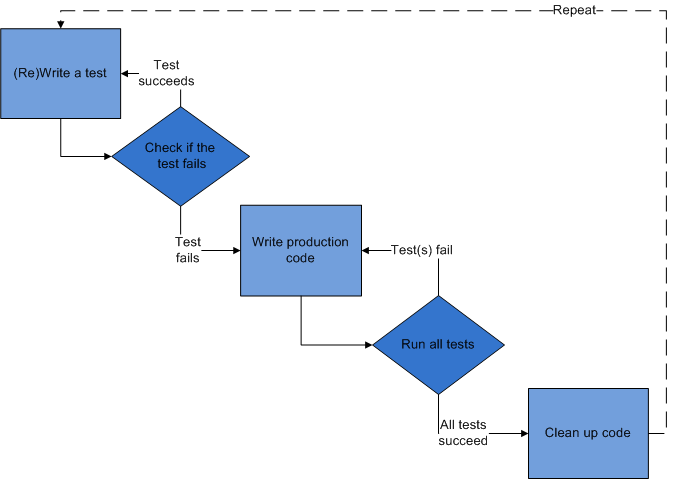CSC/ECE 517 Fall 2009/wiki2 19 as
Development methodologies
Responsibility Driven
Test Driven
Overview
Test-driven development (TDD) is a software development technique that relies on the repetition of a very short development cycle: First the developer writes a failing automated test case that defines a desired improvement or new function, then produces code to pass that test and finally refactors the new code to acceptable standards.
The following flowchart shows the typical development cycle of TDD:
Strengths
Test-driven development offers more than just simple validation of correctness, but can also drive the design of a program. By focusing on the test cases first, one must imagine how the functionality will be used by clients (in the first case, the test cases). So, the programmer is only concerned with the interface and not the implementation. This benefit is complementary to Design by Contract as it approaches code through test cases rather than through mathematical assertions or preconceptions.
Weaknesses
Behavior Driven
Behavior Driven Development (or BDD) is an Agile software development technique that encourages collaboration between developers, QA and non-technical or business participants in a software project.
Domain Driven
Domain-driven design (DDD) is an approach to the design of software, based on the two premises:
Model Driven
Model-driven engineering (MDE) is a software development methodology which focuses on creating models, or abstractions, more close to some particular domain concepts rather than computing (or algorithmic) concepts. It is meant to increase productivity by maximizing compatibility between systems, simplifying the process of design, and promoting communication between individuals and teams working on the system.
